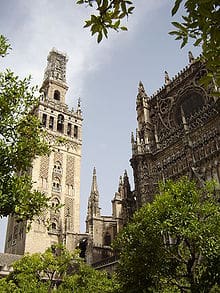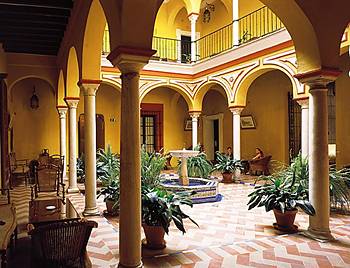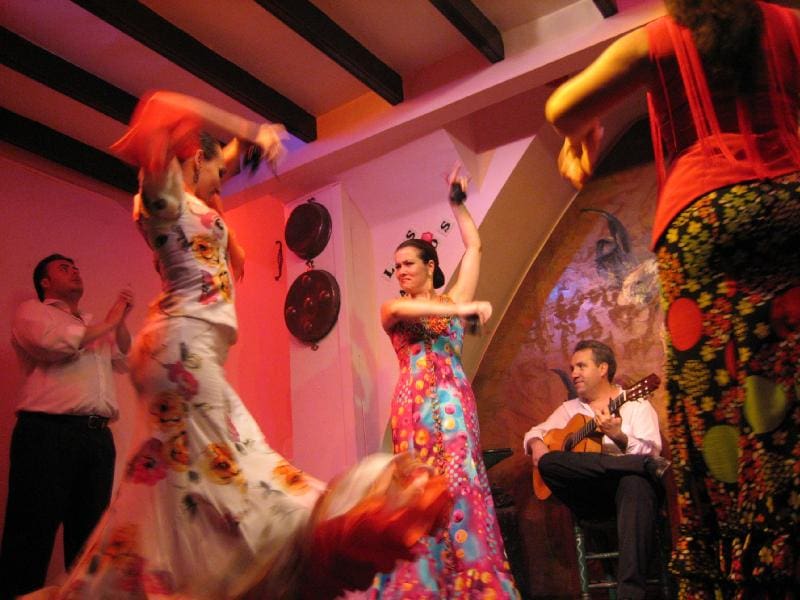From the fiery, heel-stomping, tempest of flamenco to the gracefully fluid challenge of the bullfight, Seville is at the heart of the Andalusian culture. This is a city that enjoys its history and present with gusto.
Seville has been around for over 2,000 years. In the 5th to 6th centuries, the Romans inhabited it, followed by the Moors in the early 8th century. The city endured through the centuries and embraced medieval, renaissance, and baroque influences. Both Christian and Muslim traditions have left their mark on the architecture of this Andalusian jewel.

The city’s Cathedral is one of largest Gothic style cathedrals in world. It has the longest nave in Spain and claims that the remains of Christopher Columbus are interred in a casket held aloft by four statues. The Dominican Republic also claims to have the explorer’s bones. I’m not qualified to say who is right, but the prospect fascinated me.
Next to the Cathedral is the Giralda, which is a bell tower that was once a minaret for the mosque that was there before the cathedral. I climbed the circular ramps of the tower to the top to reach a spectacular view of the city, but be advised: TIME YOUR CLIMB! I enjoyed the beautiful vista for about five minutes before the bells started ringing and my brain turned inside out!
Back down the tower, and right across the way is the Alcazar Palace. Begun in 1181 and under construction for 500 years, the palace has dozens of courtyards and halls decorated with intricately carved stucco and colorful tile work. It is a popular place for wedding photos and I saw several wedding parties and lovely brides while there.

Bordering these historic buildings is the Barrio Santa Cruz, or the old Jewish Quarter. This part of the city exudes charm, romance, and great TAPAS! This is the most picturesque part of the city, filled with cobbled, winding lanes, hidden plazas, draping flora, and romantic courtyards. I stayed in the most fabulous place, Las Casas de la Judería. It is a complex of houses and palaces, annexed over time and connected by a series of walkways, patios, and courtyards. It is a warren of hallways and at every turn are charming fountains and wrought iron gates.

At night, the many bars and restaurants of Santa Cruz are abuzz with activity. Most tables are outdoors and every courtyard is full of social chatter. Tapas are snack sized dishes that are a main cultural allure of the city. Sevillanos dine late then party and dance into the wee hours and many discotheques are open until 10am. The barrio Santa Cruz is also the spiritual home of flamenco. The dance reflects the energy, passion, and romance of the Andalusian culture. Performances are held at several clubs and I highly recommend seeing one.
Seville displays her passion in two annual events. First is Semana Santa, the Holy Week celebration. Every day between Palm Sunday and Easter Sunday the citizens carry huge gilded wooden statues called pasos through the streets. Some of the statues are hundreds of years old and are testaments to Spanish culture and heritage. Huge numbers of people throng the streets to pay their respects. Just a few weeks later is the annual Spring Fair, or Feria, when everything closes and seemingly the entire city dons traditional flamenco costumes and goes out partying for a whole week.
Seville is an exceptional pocket of Spain that wears her heritage and culture proudly. Visit and immerse yourself in her zest for living.






Leave a Reply